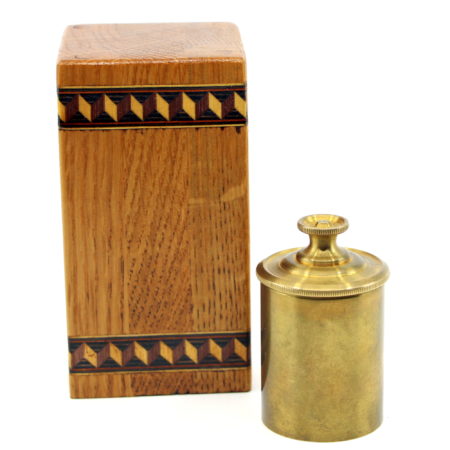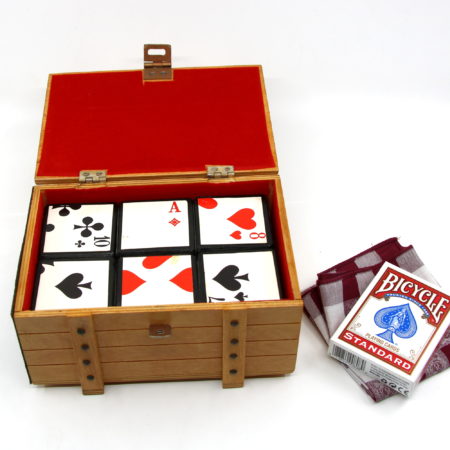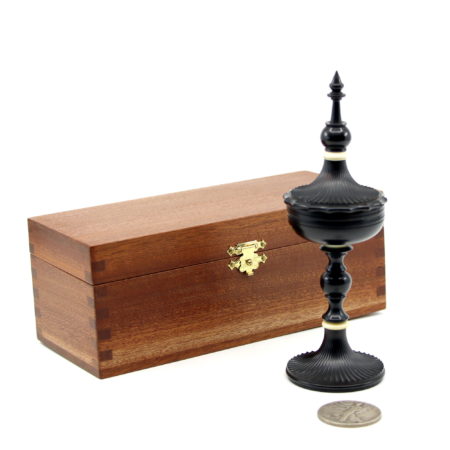
This effect was first invented by James Lucier as The Cockeyed Skeleton In The Closet and described in Genii October 1949. The effect was also released c. 1949 through Sedghill Industries as The Scrambled Skeleton with credit also going to James Lucier. There have been many versions of all shapes and sizes ever since.
This version from the talented and inventive craftsman Michael Baker is easily the prettiest and most substantial version I have ever seen. In addition to outstanding construction it includes some neat features:
- The blocks are double sided with a skeleton on one side and a zombie on the other so you can switch up the routine as desired.
- It includes a unique Tombstone in a wheelbarrow container that not only has a very effective vanish but it much more entertaining than the more usual Devil’s Hanky or similar approach to vanish. The vanish involves a penetration of the block by a large spike and even close-up looks perfect.
- The main tube has a three-dimensional rustic coffin facade which makes the whole unit seem more authentic and certainly lends itself to some more interesting patter presentations.
Click here for more information.









